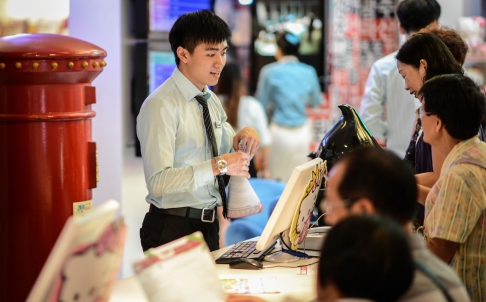

Follow us on:  
|


The services sector accounts for almost half of the economy and is the biggest employer in China [Xinhua]
The Ministry of Human Resources and Social Security said on the sidelines of the 19th National Congress of the Communist Party of China, which kicked off late last week, that the unemployment rate in the cities fell to 3.95 per cent.
Just three years ago, the unemployment rate had been 4.08 per cent.
Chinese authorities have struggled in recent years to reshift priorities away from the traditional bastions of the economy – manufacturing, exports and government spending – to focus on domestic consumption and services.
The job market faces pressure as China’s manufacturing sector is hampered by an economy which slowed but appears to be gaining momentum.
They have introduced corrective measures to reform the economy but this has been challenged by GDP growth, which has fallen from double digits to a range of 6.5 to 7 per cent, the slowest rate in 25 years.
Last week, China’s National Bureau of Statistics showed that GDP growth in the first three quarters of the year came at 6.8 per cent.
The service sector expanded 7.8 percent year on year in the first three quarters, outpacing a 3.7-percent increase in primary industry and 6.3 percent in secondary industry, NBS data shows. Retail sales grew 10.3 per cent in September from a year earlier.
Beijing has allocated nearly $7 billion to help local governments to boost employment and has asked local authorities to increase capital input and implement employment policies.
Meanwhile, the UN has urged the BRICS countries to pay special attention to youth employment.
The UN’s World Employment and Social Outlook report said the total number of unemployed people globally will top 200 million for the first time in 2017, up from 197.1 million in 2015.
Unemployment in emerging economies would pose a challenge to the leadership in these countries, the International Labor Organization says.
The BRICS Post with inputs from Agencies